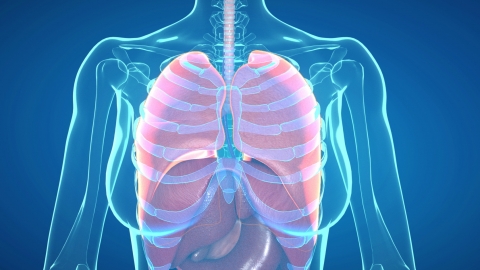What are the causes of pulmonary bulla formation?
Under normal circumstances, the formation of pulmonary bullae may be caused by unhealthy lifestyle habits, aging, chronic bronchitis, bronchial asthma, tuberculosis, and other factors. Symptomatic management through general treatment and drug therapy is usually required. If discomfort occurs, it is recommended to seek medical attention promptly. A detailed explanation is as follows:

1. Unhealthy Lifestyle Habits
Long-term smoking or prolonged inhalation of harmful gases, dust particles, and other physical and chemical irritants can cause these irritants to enter the lungs, making the alveoli prone to rupture and subsequently form pulmonary bullae. Symptoms may include coughing, sputum production, and shortness of breath. It is recommended to quit smoking persistently, avoid secondhand smoke and harmful gases, and engage in regular physical exercise to improve overall health.
2. Aging
With increasing age, collagen and elastic fibers in the lungs gradually decrease, weakening the structural support of the alveolar walls. The pressure within the alveoli may cause them to expand and eventually form pulmonary bullae. Regular exercise and maintaining a healthy lifestyle can generally help slow the decline in lung function.
3. Chronic Bronchitis
Chronic bronchitis is associated with infections and impaired immune function. After infection of the bronchi, increased secretions may cause spasms, affecting respiratory function and leading to the formation of air-filled cysts in the lungs. Common symptoms include coughing, sputum production, and wheezing. It is recommended to take medications such as amoxicillin capsules, levofloxacin hydrochloride capsules, and compound licorice tablets under medical guidance.
4. Bronchial Asthma
Bronchial asthma may be related to allergen exposure and genetic factors. Asthma causes airway hyperresponsiveness, resulting in bronchial spasms when exposed to irritants, which affects respiratory function and leads to the formation of pulmonary bullae. Symptoms may include recurrent wheezing, shortness of breath, and chest tightness. It is recommended to use medications such as albuterol sulfate inhaler, budesonide inhaler, and ipratropium bromide and fenoterol inhalation solution as directed by a physician to relieve symptoms.
5. Tuberculosis
Pulmonary tuberculosis is mostly caused by infection with Mycobacterium tuberculosis. Radiological examinations may reveal pulmonary bullae, and patients often experience symptoms such as coughing, hemoptysis, night sweats, and chest pain. It is recommended to follow medical advice to use medications such as isoniazid tablets, rifampin capsules, and ethambutol hydrochloride tablets for treatment.
In daily life, it is advisable to maintain good indoor air circulation and avoid prolonged exposure to polluted environments. Regular physical exercise to enhance physical fitness and immunity can help reduce the risk of disease development.
References
[1] Gong Zengjian. Study on Chest CT Manifestations and Diagnostic Value in Patients with Severe Pneumonia[J]. Imaging Research and Medical Applications, 2021, 5(17): 128-129.
[2] Yin E'gao, Wu Maofang, Tang Yongjiang. A Case Report of Pulmonary Bullae in Both Lungs Caused by Co-Infection of Influenza A (H1N1) and Staphylococcus Capitis and Literature Review[J]. Journal of Clinical Pulmonary Medicine, 2025, 30(03): 484-486.




